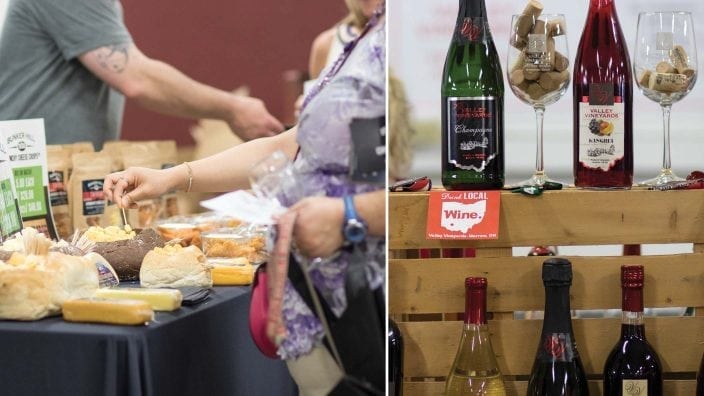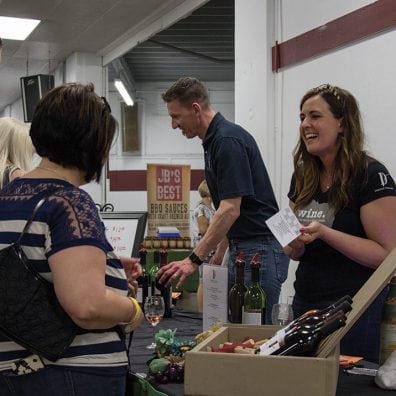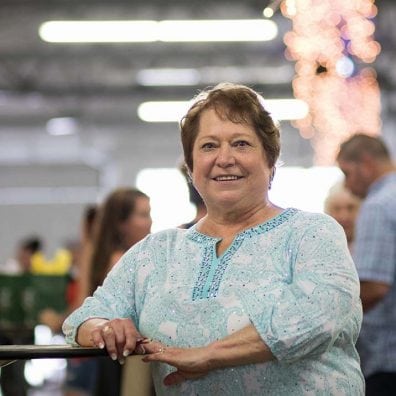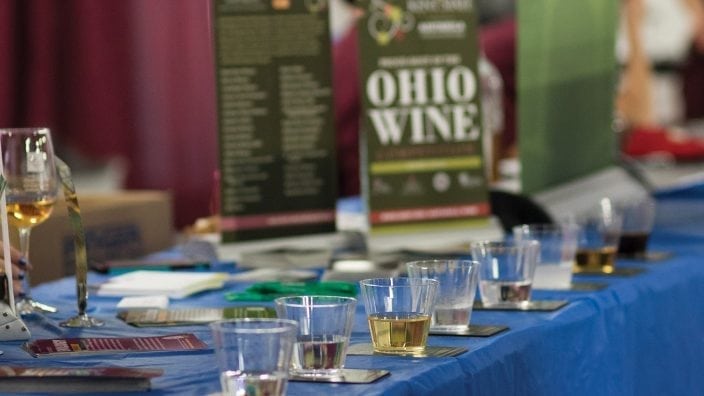Applications for Ohio Farm Bureau Health Plans now available
Members have three ways to apply: contacting a certified agent, calling 833-468-4280 or visiting ohiofarmbureauhealthplans.org.
Read MoreOhio wineries were as rare as soy lattes in 1975, when 13 wine producers decided to form an association to promote their product. The initial kitty was $750. Had you told them that by 2018 some of Ohio’s 285 wineries would rival California, they might have suggested you’d had way too much vino.
Just shows what can happen when like-minded growers band together to promote their crop with creativity, planning and perseverance.
Another plus is Donniella “Donnie” Winchell, who has served as executive director of the Ohio Wine Producers Association for 40 years. Her passion and willingness to work match that of any grower and helped develop today’s $1.31 billion Ohio wine industry.
She started as a 15-hour a month executive secretary. While her wine experience was limited back then, the part-time job was a good fit for the Madison, Ohio, native, who left a teaching career to raise her family. Winchell, an Allegheny College graduate, planned to be the first female school superintendent of her home district.
How things change.
Thanks in part to her marketing prowess, today some Ohio cabernets, chardonnays and others win prestigious awards, something few Ohioans — much less the rest of America — know about.
Because most Ohio wineries sell all their product in state, it’s “hard to get the national press to provide the ‘external validation’ needed to build respect among the ‘connoisseur class’,” she said. “We need to work harder to share the incredible quality we are now producing with a larger audience.”
The popular Vintage Ohio wine festival started on a small scale in the mid-1990s. Now Wine Spectator magazine considers it a “top wine and food event.” Other promotions include wine trails and winery tastings.
Wine trails became a hit in northeastern Ohio, where the first wineries are closely clustered in areas benefiting from Lake Erie’s moderating effects on the weather. “It’s a McDonald’s-Arby’s-Wendy’s theory: a critical mass establishes traffic,” Winchell said. “So the Grand River Valley wineries have developed mutual support networks, which have served them well.” There’s also good-natured rivalry.

However, long drive times between southwestern Ohio’s wineries prompted a new approach — Vintage Ohio South debuted in mid-May, 2018. Response to the one-day event in Springfield “was unreal,” she said. “We were expecting about 300 to 400 but 1,300 people came.” Some of those visitors will seek the wines at retail outlets or drive to the wineries.

In keeping with her reliance on long-range, strategic planning, the one-day event has a goal to expand to a two-day, multifaceted festival drawing 5,000 within three to five years.
Winchell credits her approach to her mentor, Robert Gottesman, who owned several wineries when the association began and provided some financial help for the young organization. “He was a visionary,” she said. “I keep his card to remind me to pay homage.”
Formation of the Ohio Grape Industries Committee established by the state legislature in 1981 was a giant step forward. A small increase in the state’s wine tax is allocated to cover marketing and research. The model inspired similar programs in over 30 other states, Winchell said. Recently Idaho wine producers sought information for a program.
She also praises Ohio Farm Bureau, “an advocate to protect not only the interest of our growers but agriculture generally.” Farm Bureau “has been a huge supporter of the Vintage Ohio wine festival, created two decades ago, to share the story of our industry with the general public and media,” Winchell said. “Farm Bureau was also of great help during our polar vortex crisis.”
The winter of 2013-14 killed virtually all Ohio vines. Winchell said the U.S. Department of Agriculture’s Farm Service Agency helped save the industry. Insurance coverage was amended to fit wine growers’ special needs. Woody grape vines can take two years to die from harsh weather. The still-living vines were also covered, easing replanting costs.
Last year production was about 85 percent of full. This year “we should be back to our prior levels,” she said.
Despite such challenges, wineries are multiplying. Almost half started in the last seven years. Economics is a prime driver. Growers make $600 a ton selling grapes to a winery but $2,000 to $3,000 a ton selling wine, Winchell said.
Martin Susec, a Columbus attorney, is among the newcomers. Though his is a small-scale, do-it-yourself operation, he’s found the wine producers association “very accepting of new wineries.” The Franklin County Farm Bureau member also gets help from Ohio State University Extension and Farm Bureau, where “I see what other people are doing,” he said. “The greatest help is you’re not alone.”
Susec, with help from his fiancée Teresa Holter, is transforming part of his late parents’ 50-acre farm near Geneva into a winery as an agritourism destination. Besides nostalgia, there’s a touch of old-world charm. His late parents, Otto and Marija Susec, immigrated from Slovenia in the 1960s. While his dad worked at a Ford plant, they dreamed of raising livestock, fruit trees and grapes.
With a small pond and woods, the Susec Chalet and Winery is a quiet place to relax. He said, “I hope I’ll retire there.”

Donnie Winchell, who is an Ashtabula County Farm Bureau member, was one of four agricultural leaders inducted into the Ohio Agricultural Council’s 2018 Ohio Agricultural Hall of Fame at a ceremony during the Ohio State Fair in August.
She has served as the executive director for the Ohio Wine Producers Association for 40 years and has been instrumental in building the association into one of the most respected wine organizations in the nation.
“I am incredibly honored to accept this recognition on behalf of all of the accomplishments of our industry for over 40 years,” Winchell said. “We have grown from a mere 13 wineries to nearly 300 today with an economic impact, primarily focused on family businesses in our rural regions, of over $1.3 billion and over 8,000 jobs. We want to thank the Agriculture Hall of Fame for this great honor.”
Do the math — A new vineyard costs up to $15,000 an acre, especially if tile is needed. Good drainage improves winter survival chances of the vinefera (European) type grapes used for connoisseur wines.
Maintain balance – Donnie Winchell must balance the wine industry’s diverse needs, from well-funded established growers to small newcomers, from producers of sweet wines with catchy names to vinefera wineries competing with California’s best.
Make it sweet – Dry wines appeal to a minority of wine drinkers, albeit those willing to pay premium prices, while 82 percent of consumers favor sweet wines (2 percent or more sugar content).


Members have three ways to apply: contacting a certified agent, calling 833-468-4280 or visiting ohiofarmbureauhealthplans.org.
Read More

One of the best decisions Shannon and Heather Utter made a few years ago was looking into a Farm Bureau member benefit that has ended up saving them thousands of dollars on their energy bills.
Read More

Ryan Hiser has experienced first-hand the importance of having the opportunity to vote on issues that will affect his family operation and other farmers.
Read More

Bill Patterson, Cy Prettyman and Adele Flynn will continue to serve as officers for Ohio Farm Bureau Federation.
Read More

Delegates discussed many topics impacting agriculture including farmland preservation, local foods, and succession planning.
Read More

Twenty-six farmers govern the state’s largest farm and food organization.
Read More

The 2025 recipients are Fred Cooke (posthumous) of Richland County, Marvin Dietsch of Williams County, Steven Knollman of Hamilton County and Michele Miller (posthumous) of Ottawa County.
Read More

Nathan and Jill Parriman grow seasonal crops, including Christmas trees, pumpkins and cut flowers, providing U-cut experiences that invite customers to engage directly with agriculture.
Read More

The 2025 Distinguished Service Award recipients are Craig Adams, Mike Townsley, and Kellogg Farms, Kurt Farms and Stateler Family Farms.
Read More

Ohio Farm Bureau Treasurer Adele Flynn participated in the meeting, representing Ohio farmers.
Read More